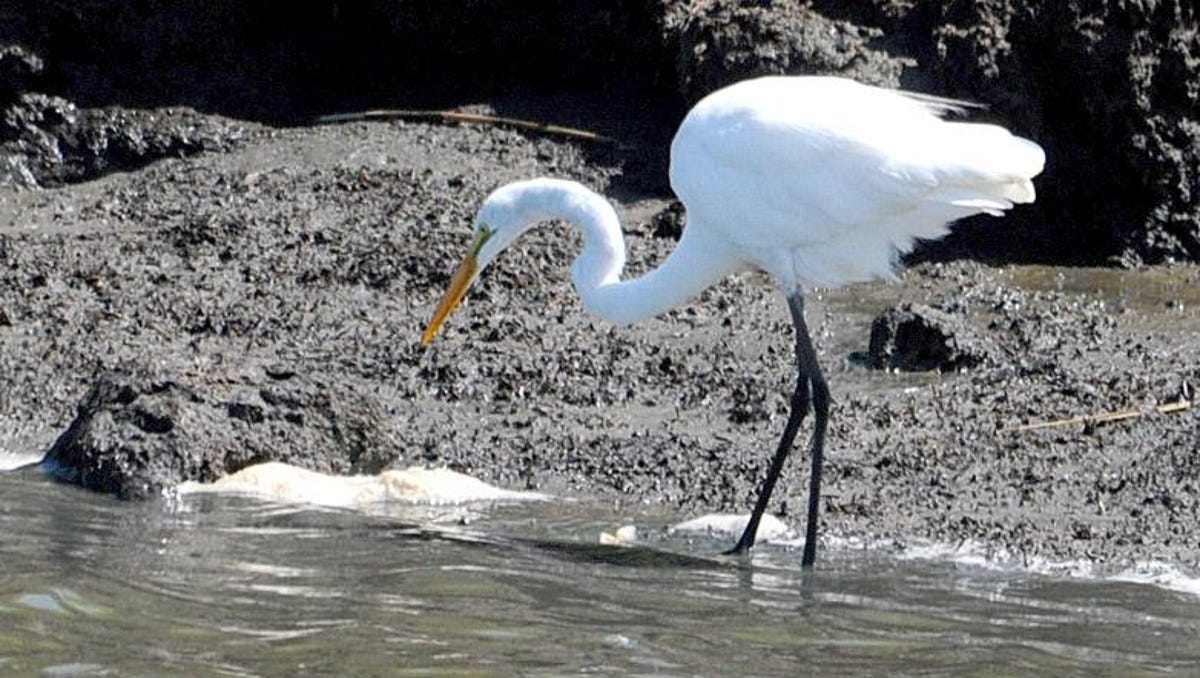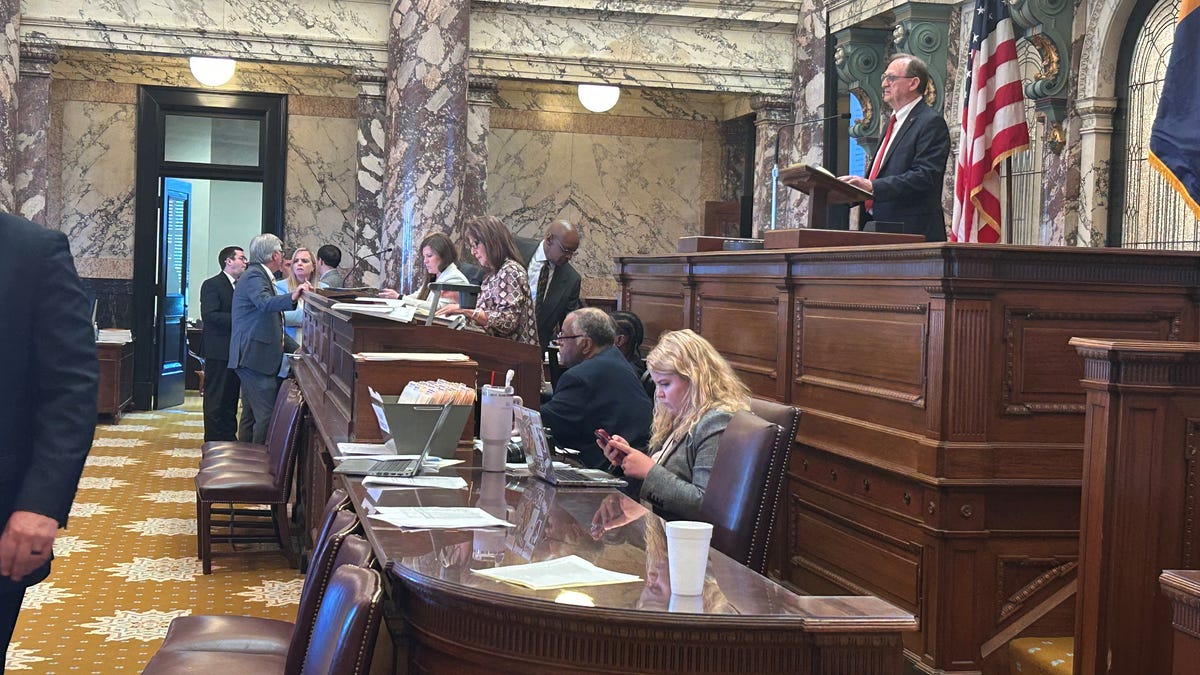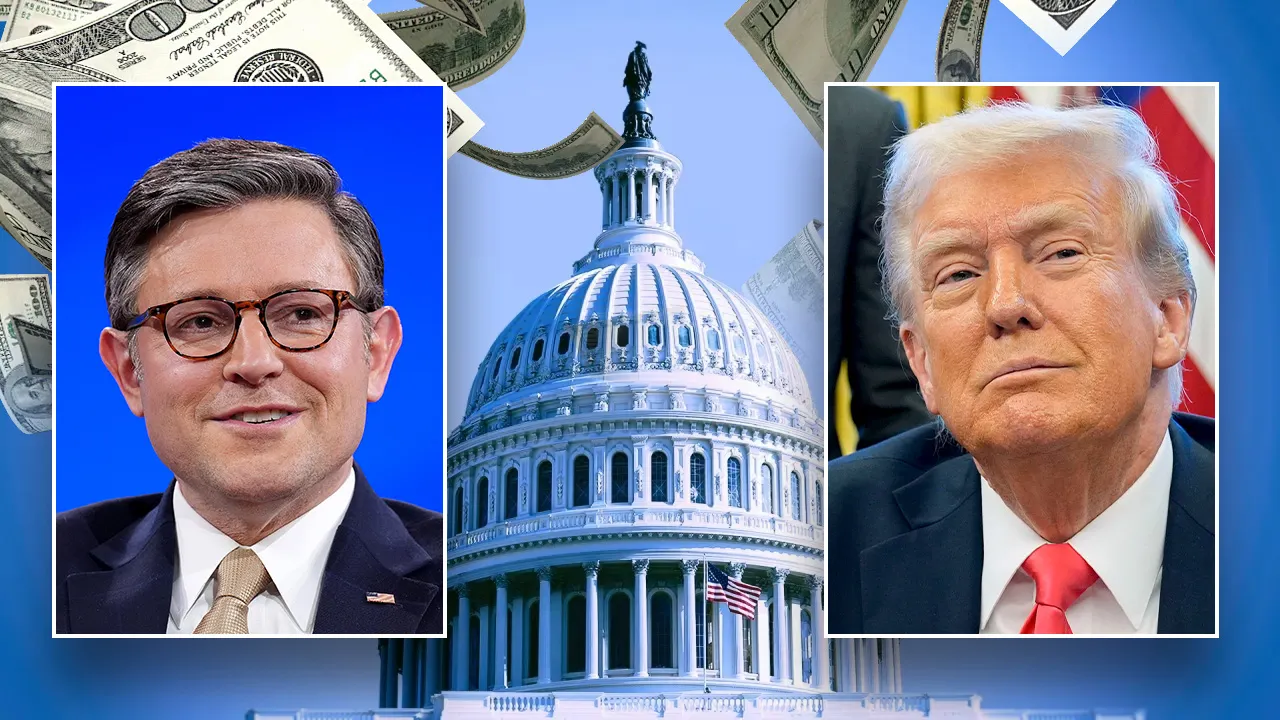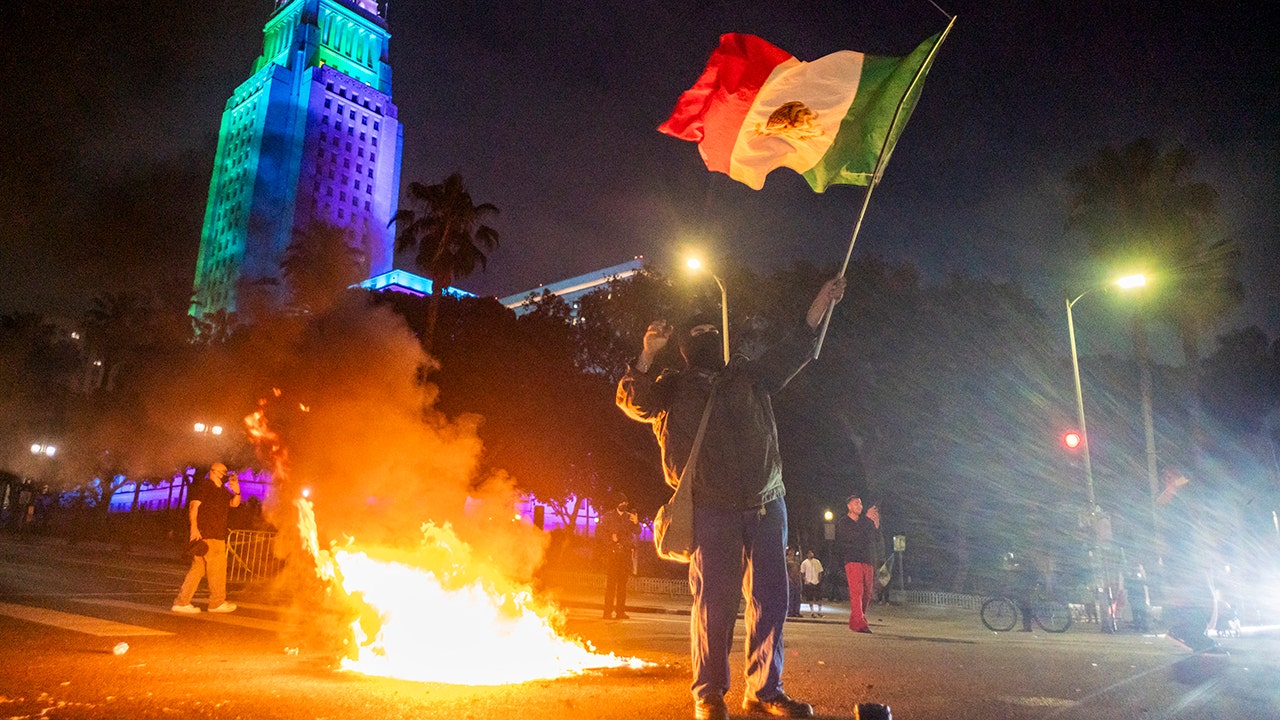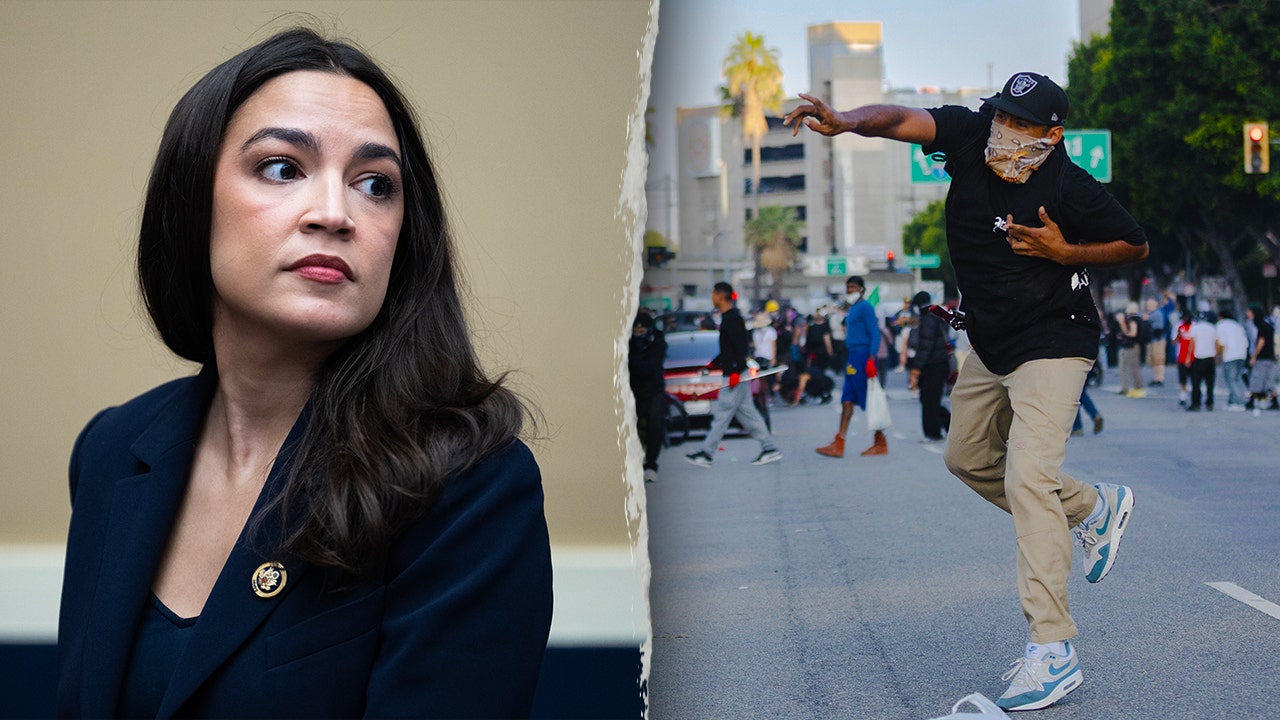Kansas
Saving a neighborhood park in this Kansas town was a necessary lesson in community — and democracy • Kansas Reflector

It would be easy to overlook Quaker Park.
Located on the corner of First and Sylvan in Emporia, it’s less than an acre in size. It has trees and grass and a ball court and a weathered basketball goal, just what you’d expect of a neighborhood park in a working-class part of town. It’s a nice place to shoot hoops or play catch, but it doesn’t seem special. It’s not the oldest park in town. Others are bigger and more beautiful and have better amenities, including a zoo and several disc golf courses.
So it was no wonder that earlier this year Emporia added the park to its surplus property list, a sort of municipal equivalent of gathering up items for a garage sale. Who would really miss Quaker Park? The city could rid itself of the burden of maintenance and provide land for a modest housing development.
Then something surprising happened.
Residents fought back.
I am reminded of the petition drive to save Quaker Park because of recent news from Wichita that the city is considering selling some of its parks to make up a projected $3.6 million budget shortfall by 2026. At a public hearing earlier this month, Wichita Mayor Lily Wu said she wasn’t advocating to eliminate some of the city’s 146 parks, but that all options were on the table.
The future and function of municipal parks is something that cities of all sizes have long debated. Parks are both an expression, and a metaphor, for democracy; expression because they are policy made concrete-and-grass, and metaphor because they represent a community’s priorities, no matter the lofty marketing language you might find on a city’s website. If you want a glimpse of the soul of a community, look at its parks.
Although it would be reasonable to think there would be a metric for how many acres of parks a city should have given a certain population, that isn’t the case. While just about every other indicator does scale with population — road networks and crime rates, for example — it doesn’t work that way for parks and other green spaces.
“There’s no neat relationship between city population and parks per capita, or tree cover or even space that’s simply unpaved,” Emily Badger wrote in a 2013 Bloomberg article, citing the nonprofit Trust for Public Land’s study of parks in America’s 40 biggest cities.
We’ll return to an updated version of the Trust for Public Land study later, but first — of course! — a little history.
The first city park in America was Boston Common, founded in 1634 and initially used for cattle grazing, militia drills and public hangings. By the Civil War, it had become a place for non-lethal civic events and for free speech.
While the rich have always had private green spaces, the concept of a public park didn’t come along until the mid-1800s, with the rise of industrialization and the need for the tired and poor to, well, breathe free. The visionary who gave us municipal parks in the form we’d recognize was Frederick Law Olmsted. Known today as one of the designers of Central Park, Olmsted was more than a landscape architect. What he did best was travel and think, sometimes committing a little journalism on the way, and in 1850 he went on a six-month walking tour of England that would forever shape his — and our — way of thinking about public spaces. There, he visited Birkinhead Park, a “people’s garden” that was as open (in theory, at least) to the poorest British peasant as it was to Queen Victoria.
In parks, Olmsted imagined democracy in action.
Public spaces brought citizens together “with a common purpose,” Olmsted wrote, “not at all intellectual, competitive with none, each individual adding by his mere presence to the pleasure of all others, all helping to the great happiness of each.”
Central Park was opened to the public in 1858 and has gone through cycles of decline and restoration since. Like other American parks that would come later, it has reflected the sensibilities and sometimes the passions of its community, from the Victorian dinosaur craze to the massively attended free concert by Simon and Garfunkel in 1981.
Out here in the hinterland, our parks are heavy on history. You can scarcely visit any older city park here in Kansas that doesn’t have a monument to the Civil War or some later conflict. In Emporia, I like to walk Peter Pan Park, a 52-acre space that for about 40 years had monkeys on display in a WPA-built stone house in the middle of a lake. Most people around here know about monkey island, but the park still has some surprises. My route through the park takes me through a wooded area where stands a lonely, pylon-shaped monument to the Spanish American War.
While many parks started as memorials — and originally had the look and feel of cemeteries — in later decades the emphasis has been on recreation, from ball fields to splash pads to pickleball courts. This reflects conventional municipal wisdom that parks should be useful in some way, that public spaces should offer utility in addition to, or perhaps instead of, reflection.
But public parks offer more benefits than just playing or thinking.
In addition to being essential for our health, according to the Trust for Public Land, access to green spaces conserves nature, fights climate change, reduces crime, and strengthens communities. The trust’s original ranking of the nation’s 40 largest cities has expanded and offers insight into how equitable communities are, based on what percentage of its residents are within a 10-minute walk of a park.
Called ParkScore, the project has now expanded to the 100 largest cities and many smaller ones, and on its website you can look up metrics for just about any urban area. ParkScore uses five metrics: acreage, access, investment, amenities, and equity. Washington, D.C., is ranked the best among America’s large cities.
Wichita is ranked 66. It scores below average on acreage, access and investment, and about average in amenities and equity. Only 4% of Wichita’s land is used for parks and recreation, compared with a national median of 15%.
For acreage, Emporia fares even worse.
Only 3% of the land is used for parks and recreation. Emporia is above average for access, however, because 74% of its residents are within a 10-minute walk of a park.
Hahrie Han, a political science professor at Johns Hopkins, was quoted in a recent Trust for Public Land study that over the past 50 years, American society has seen a “withering” of common spaces for people to gather. But, she said, that trend can be combatted by investing in parks and other green spaces.
“The audacious, beautiful, and exciting promise at the heart of democracy is the idea that putting people into community with each other creates opportunities to learn the capacities, skills, and motivations needed to forge a common life together,” Han said.
Sound like wishful thinking?
It sounded like it to me at first. Then I remembered the petition drive to save Quaker Park.
In March, the Emporia City Commission voted 3-1 to designate the park as surplus property and authorize its sale. The plan called for three houses to be built on the property, two by private developers and one by the local Habitat for Humanity. Some saw it as a step toward providing housing for the community, but others questioned whether the city should be shedding a park in a part of the city that didn’t have many to being with.
The park was acquired by the city in 1952 from the Conservative Friends of Galena. It was an empty lot then and had been for years. An original Quaker meeting house had been built on the site in 1881, but as the number of Quakers in Emporia dwindled, the building had been sold to another denomination and moved.
The grassroots effort to save the park had to be done in a hurry. The goal was to gather, within a 30-day window, the required 462 signatures on a petition to halt the sale. The signatures had to be from registered voters and the number was equal to 10% of those who had voted in the previous city election.
The organizers held a barbecue, talked to reporters and community members, and established a website. In the end, they came up with more than 800 signatures. The city commission rescinded its previous action to declare Quaker Park surplus and for sale.
“We talked to so many people in this process and the vast majority of people we met were eager to sign the petition,” the five organizers said on the website. “Those few who didn’t were always respectful and we didn’t have a single contentious interaction. … Parks are a precious asset in our town, and we want to preserve them — even when they aren’t necessarily ‘our’ neighborhood park.”
There are at least a couple of lessons here for Wu, the Wichita mayor.
The first is that people will fight for their city parks.
The second is that they will do so in ways that are confoundingly civil.
I use the word confounding because in this day and age just about any political activity is likely to get you into a shouting match with your neighbor over the backyard fence. But not this. Not a single “contentious interaction.” That has to be some kind of civic miracle in 2024.
Because Wu is a registered Libertarian, I’m guessing she wouldn’t be particularly troubled by the transfer of public land to private ownership. Libertarians are notorious in their belief that free markets and private interests can better manage assets than can government. But Wu should take notice of a community coming together to save a city park in a neglected neighborhood.
So, let’s hear it for “Save Quaker Park!”
It may be just the lesson we need in how to save democracy. Or at least it might make opportunistic politicians think twice before sizing up the office furniture for a municipal garage sale.
Max McCoy is an award-winning author and journalist. Through its opinion section, the Kansas Reflector works to amplify the voices of people who are affected by public policies or excluded from public debate. Find information, including how to submit your own commentary, here.

Kansas
Missing remains behind decision to revoke Kansas City funeral home’s license

KANSAS CITY, Mo. (KCTV) – A Kansas City funeral home with a history of complaints is ordered to stop operating after an investigation found “continued violations.”
The Missouri State Board of Embalmers and Funeral Directors revoked the license for Savory and Sons Funeral Home. The funeral home is located near E. 43rd Street and Blue Ridge Boulevard in Kansas City, Mo.
The state provided information that shows the company received a probationary license in September 2020. The license was extended in July 2023, even after records show there was a second violation at the funeral home.
The Missouri State Board of Embalmers said it received further complaints about Savory and Sons, which caused it to hold a probationary hearing this week. The board said it decided to revoke the funeral home’s license after hearing testimony from people who complained about issues at the funeral home.
Some of the complaints include not receiving cremated remains of a family member, overcharging, and not receiving a death certificate.
The decision means Savory and Sons will no longer be able to hold funerals or practice as a funeral establishment in Missouri.
Due to the complaints about Savory and Sons, the Missouri Attorney General’s Consumer Protection Section is investigating the funeral home. Anyone who has issues with Savory and Sons is asked to call the attorney general’s consumer hotline at 800-392-8222.
Families with questions related to death certificates should contact the Missouri Electronic Vital Records support line at 573-751-6387. Select option 4.
The full findings of the investigation and the disciplinary order can be viewed below.
Copyright 2025 KCTV. All rights reserved.
Kansas
Kansas City, Kansas, organizations using new projects to expand housing and public transit

KANSAS CITY, Kan. — Discussions are paving the way for community initiatives aimed at addressing housing and public transit needs in Kansas City, Kansas.
Several community leaders met Wednesday to talk about a new collaboration between ARES CDL Institute, Kansas City Kansas Community College, Turning Point Consulting and the Kansas Department for Children and Families.
Dr. Fabiola Riobé, a vice president at Kansas City Kansas Community College, emphasized the importance of collaboration in creating meaningful change.
Dale Messing/KSHB 41
“It’s only when we come together are we actually going to have something that pushes the needle forward,” she said.
This initiative stakeholders met about, including Mayor Tyrone Garner and a representative from U.S. Department of Housing and Urban Development, aims to provide Commercial Driver’s License (CDL) training to clients of the Housing Authority.

Dale Messing/KSHB 41
“Housing someone is not the end all,” said Andrea Tapia, executive director of the Kansas City, Kansas Housing Authority. “They still need wraparound services. There are still issues like transportation, issues like finding a job, childcare. All of those things still need to happen.”
Transportation is a central theme in the second initiative: the development of Redbud Reserve, a 192-unit garden-style affordable apartment community to be built on 10.63 acres at 6909 State Avenue.
Marian Development Group leads the project under Redbud Reserve LLC.
The Kansas City Transportation Authority’s (KCATA) Economic Development and Real Estate Committee approved the proposal, meaning that it now needs two votes of approval from the organization’s full board.
The first vote would take place on June 25 and the second vote on July 30.
“[The developer] helps build out transit infrastructure, and then we offer affordable housing to the region, and especially to our riders,” said Michael Riley, KCATA director of transit-oriented development and transit-oriented community.
The project, if approved, would be scheduled to begin in the fourth quarter of 2025 and end around the second quarter of 2027.

KCATA
It will also feature eight, three-story buildings, a clubhouse, playground and open spaces.
The vacant site is located within the RP-5 multifamily zoning district and has already received support from 8th District Commissioner Andrew Davis and KCKCC President Greg Mosier.
“This would be the first Transit-Oriented Community Development (TOCD) in Wyandotte County along the Bi-State Corridor supported by KCATA,” Riley said. “This would be pretty rare for KCK since it’s our first KCK facility.”
Riley says KCATA has approved eight TODC facilities in Kansas City, Missouri.
The development is expected to generate approximately $18 million in taxable construction purchases and long-term property tax revenue, while also increasing KCATA ridership.
Riley confirmed none of the cost comes from KCATA, which recently announced it was cutting the frequency of routes and service hours due to lack of funding.

Dale Messing/KSHB 41
“All that money comes from the developer, so for the most part, the developer brings the capital to us, they’ll help buy our bonds,” Riley said. “Our bonds help facilitate TOD, transit-oriented outcomes, and then they get the savings for the tax exemption.”
The $52.5 million development will be funded through various public-private partnerships, including 4% federal and state Low-Income Housing Tax Credits (LIHTC), tax-exempt START conduit bonds, conventional debt, and sponsor equity.
Riley says the development team will fund the construction of a new bus stop and support KCATA’s Community Ambassadors program, which aims to enhance bus safety and provide social service support to riders in need.
Additionally, the developer has agreed to an impact payment contribution of $367,500 to Wyandotte County.
“I am excited about the prospect of this project, providing additional high-quality, safe, and affordable housing options for our students just across the street from the college,” said Mosier said in a release.
The first training event for the ARES CDL Institute project will take place on June 27 at Wyandotte Towers Community Center, 915 Washington Boulevard from 8:00 a.m. to 7:00 p.m. for anyone looking to learn more about employment opportunities.
Kansas
Residents take to downtown Kansas City, Missouri, display signs of ‘solidarity’

KANSAS CITY, Mo. — People gathered in parts of downtown Kansas City, Missouri, Tuesday night holding signs of “solidarity.”
KSHB 41 News reporter Isabella Ledonne followed with protesters as they demonstrated underneath an Interstate 35 overpass just south of downtown near Kansas City’s Westside.
Protesters want ICE raids to stop
Demonstrators said they were showing support to their community in Kansas City and Los Angeles.
Parts of Los Angeles have been ground zero in a demonstration against federal government immigration enforcement efforts. Many in attendance on Tuesday in downtown Kansas City told KSHB 41 News they are immigrants themselves.
Jack McCormick
“I know what this feels like; it’s heartbreaking,” Kansas City protester Jessica Saucedo said. “I hate it. I don’t sleep.”
Protesters marched from the underpass east toward one of Kansas City’s iconic locations – the north lawn of the World War I Museum and Memorial.

KSHB
“I felt it was my right and my duty to come here as what I had to go through to come here and yell,” Saucedo said.
Leonardo Hernandez and Michelle Ramos explained public safety was top of mind, as numerous reports fled out of the protests in LA.

Jack McCormick
“I was a little nervous,” Hernandez said. “I’m not going to lie. I thought, you know, you never know what could happen at these events.”
Hernandez and Ramos told KSHB 41 reporter Isabella Ledonne they saw a fight break out between two men in the street, and they heard a firework explode.
“One little thing can trigger the whole crowd and we were doing a peaceful protest and that fight was so unnecessary,” Ramos said.

Jack McCormick
Even with that isolated incident, Hernandez said he’s glad he came out and share his voice.
“At the end of the day, what you are, what color it doesn’t matter, we’re here to support, make a change. Unity is very important,” he said.
Protesters marched around downtown for several hours on Tuesday evening, eventually blocking the intersection of Pershing and Main in front of Union Station. Several fireworks were set off in the evening, disrupting both lanes of traffic.

Jack McCormick
The crowd eventually dispersed around 11 p.m. on Tuesday. KCPD said no arrests were made, no injuries were reported and the demonstrations remained peaceful.
KSHB 41 reporter Isabella Ledonne reports on stories about government accountability. Share your story idea with Isabella.
This is a developing story and will be updated.
—
-

 West6 days ago
West6 days agoBattle over Space Command HQ location heats up as lawmakers press new Air Force secretary
-

 Alaska1 week ago
Alaska1 week agoInterior Plans to Rescind Drilling Ban in Alaska’s National Petroleum Reserve
-

 World1 week ago
World1 week agoTwo suspected Ugandan rebels killed in Kampala explosion
-
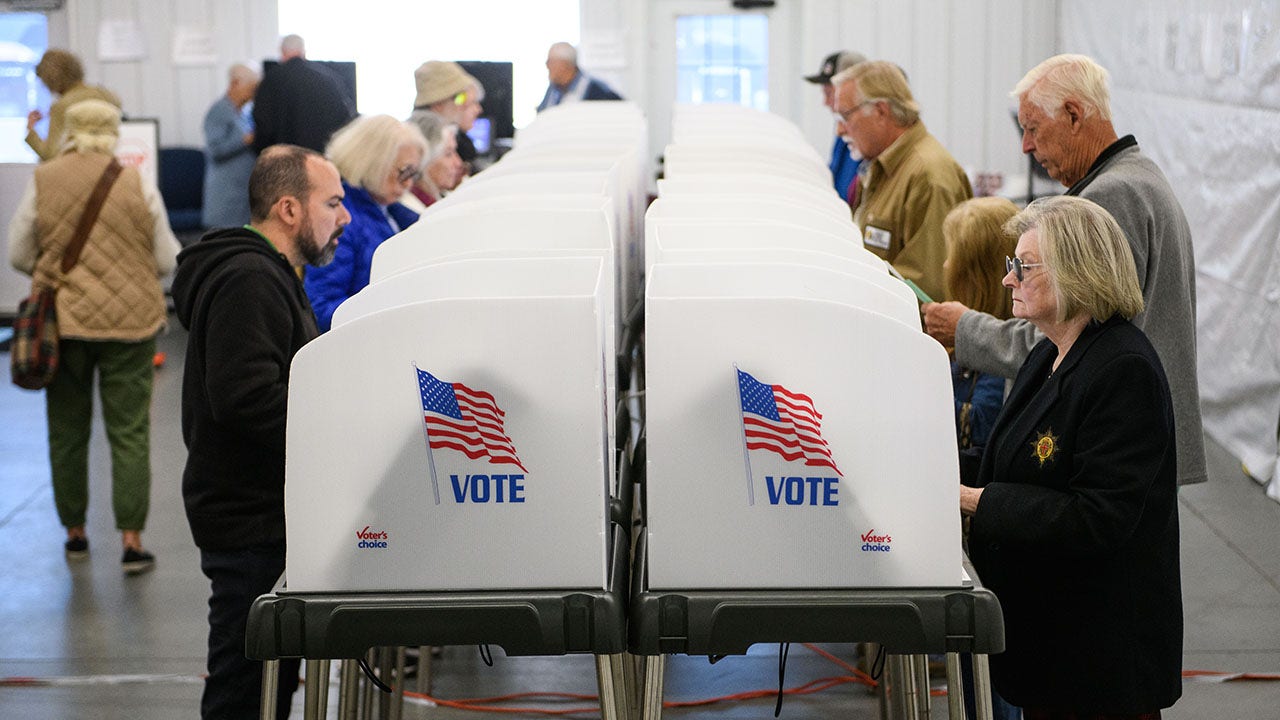
 Politics1 week ago
Politics1 week agoRed state tops annual Heritage Foundation scorecard for strongest election integrity: 'Hard to cheat'
-

 Culture1 week ago
Culture1 week agoDo You Know the Jobs These Authors Had Before They Found Literary Success?
-

 Technology6 days ago
Technology6 days agoiFixit says the Switch 2 is even harder to repair than the original
-

 Movie Reviews1 week ago
Movie Reviews1 week agoParvulos: Children of the Apocalypse: Mexican horror movie may be the best of the year
-

 News1 week ago
News1 week agoStabilizing 'operations,' the National Weather Service hires again after Trump cuts
